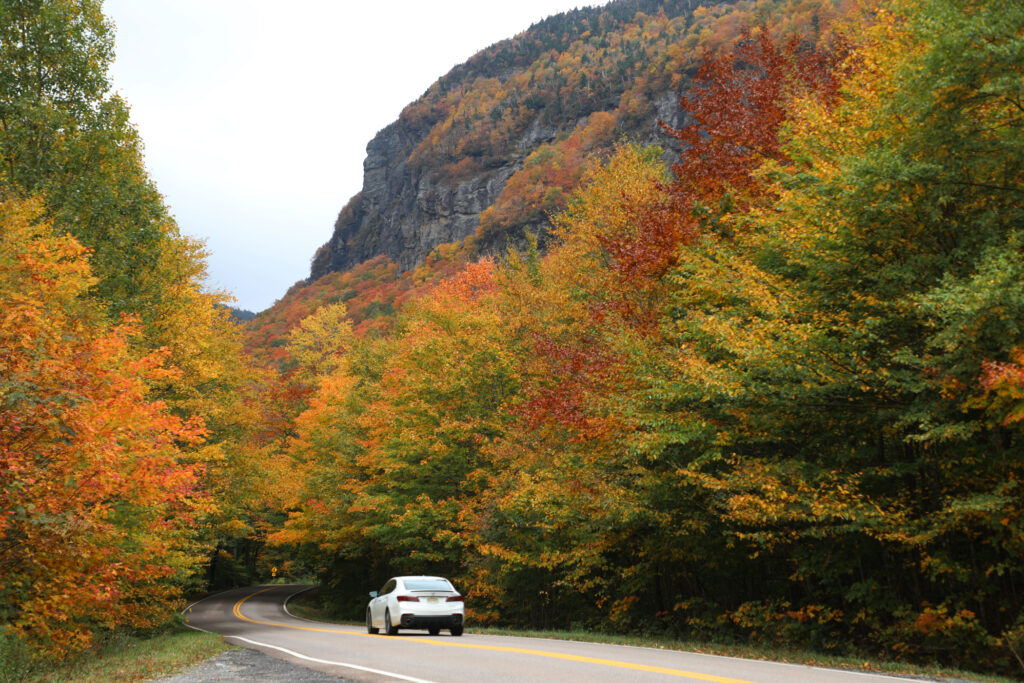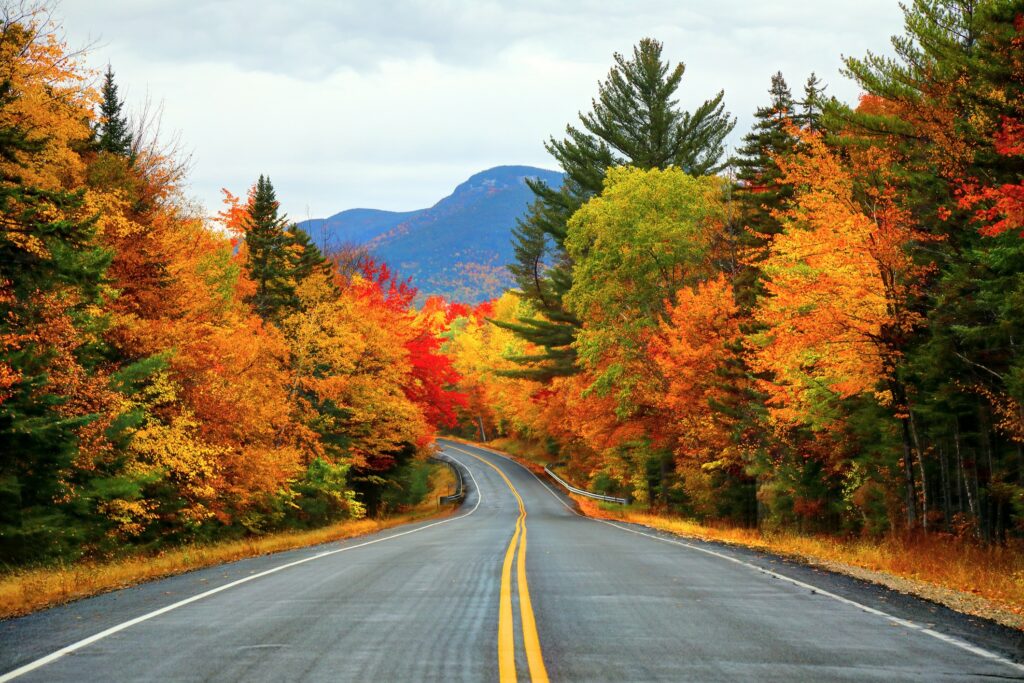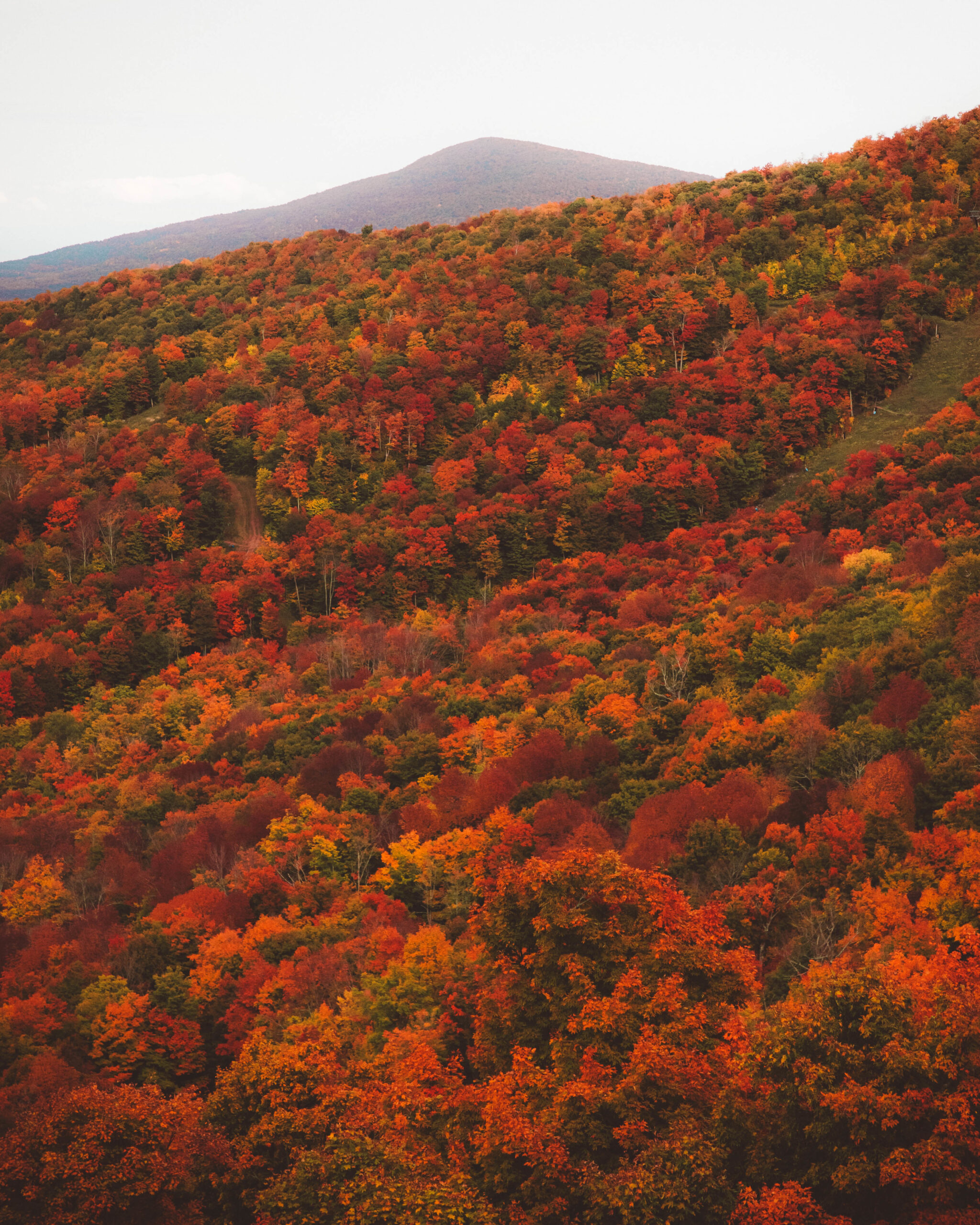When planning a trip to view – and photograph — the kaleidoscope of fiery reds, burnt oranges, and golden yellows of fall foliage on the East Coast, timing is of the utmost importance.
Climate change has affected weather patterns, causing autumn temperatures to rise, and leaf colors to change later in the season.
Most predictions for the northeast indicate that leaves will start changing to mostly yellow and a bit of orange in mid-September. By the end of September, the northernmost states should be in full color. Mid-October is the peak season for the rest of the northeast, and leaves will continue to change color through October and even November along the southeast coast.
The intensity of color and time of peak color vary, determined by environmental factors and the genetic makeup of trees. The most vibrant colors occur during the shortening days of autumn when days are sunny and cool, nights are cool but not below freezing, and there has been ideal rainfall. Adequate rainfall also keeps leaves on trees longer.
Before you go, take advantage of websites that have webcam images providing views of leaf color progress in real time. Here are some primo spots to check out along the East Coast.
Maine

The Rangeley Lakes Region is sometimes called the jewel of the Western Maine mountains. Its high peaks are among the best places in Maine to see fall foliage because of the contrast between its high-altitude evergreens; the red, orange and yellow leaves of its lower-altitude deciduous trees, and its six crystal-blue lakes.
The 35-mile Rangeley Lakes National Scenic Byway winds through the mountains. Quill Hill, on Oddy’s Road off Route 16 between the towns of Rangeley and Stratton, and the Height of Land roadside rest stop on Route 17 near Rangely, offer expansive vistas for motorists. For hikers, Bald and Saddleback mountains provide breathtaking summit views.
Another of the state’s leaf-viewing paradises is Bar Harbor, a cliffside town near Acadia National Park that is especially resplendent in mid-October. Within the park, Cadillac Mountain is the highest point within 25 miles of the coastline.
Vermont

Foliage change generally occurs between mid-September and mid-October in Vermont, with areas near the Canadian border and at higher elevations occurring first. By mid-September, full color appears across the north, moving progressively south into towns and valleys during the first two weeks of October. For about two weeks each season, every hillside is aflame with color.
The 71-mile Green Mountain Byway is considered the state’s most scenic byway. Located between two mountain ranges, it passes through six towns, including Waterbury and Stowe, in Vermont’s Mount Mansfield and Smugglers’ Notch region. Its wealth of sugar maple trees turning to brilliant red, orange and gold share the scene with lakes, state parks, farmlands, waterfalls, meadows and grasslands, even mills and covered bridges.
New Hampshire

You can find peak foliage pretty much any day somewhere in New Hampshire during September and October.
The leaves along the 60-mile Kancamagus Scenic Byway ( Route 112) usually begin to change color in mid-September, with peak time from late September through the first two weeks of October. “The Kanc” is the consummate road for appreciating the White Mountains region of north-central New Hampshire during leaf-peeping season. It offers panoramic views of the White Mountains, the Swift River, and waterfalls including Sabbaday Falls and the Lower Falls.
Pull off at the Hancock or Sugar Hill overlooks for scenic vistas, or explore miles of hiking trails along the pass-through in the White Mountain National forest.
For those who prefer not to drive, check out the Conway Scenic Railroad or the Cog Railway, which goes to the top of Mount Washington.
Virginia to North Carolina

The Blue Ridge Parkway weaves through the Blue Ridge Mountains from the southern tip of Shenandoah National Park in Virginia to the Great Smoky Mountains National Park in North Carolina. The route consists of more than 460 miles of winding roads, viaducts and overlooks where you can stop and savor magnificent vistas.
With commercial vehicles prohibited, and a 45 mph speed limit in place, the parkway offers an opportunity to cruise along at your leisure and stop for photo ops.
October is when leaf colors will be at their peak along the parkway, but it depends on elevation. Leaves start changing on the highest peaks, and conclude in the lower elevations. Views from the parkway include both east- and west-facing slopes, and vary in elevation from just under 650 feet at the James River in Virginia to more than 6,000 feet south of Mount Pisgah in North Carolina.
The Virginia section of the parkway, Skyline Drive, runs 105 miles along the crest of the Blue Ridge Mountains in Shenandoah National Park. It takes about three hours to travel the length of the road inside the park.
In North Carolina, a wide variety of trees — sugar maples, scarlet oaks, hickory and sweetgums — create vibrant bursts of color in the Great Smoky Mountains from early October through early November.
New York


By late September, the first signs of the leaves changing color are evident in the Catskill Mountains of southeast New York State. Also located in the region are the 600,000-acre Catskill Park and the Catskill Forest Preserve. A mix of birch, maple, oak and beech trees turning yellow, orange and red, plus mountains, meadows, forests, lakes and rivers, make for excellent leaf-peeping from early through mid-October.Among the best routes to drive is the Catskill Mountains Scenic Byway, which mostly follows Route 28 and stretches 52 miles across four towns through the heart of the central Catskills. The 41-mile Mountain Cloves Scenic Byway goes through the Great Northern Catskills with epic vistas of trees turned gold, tangerine and ruddy. The Durham Valley Scenic Byway goes through 21 miles of views and rolling farmland. There’s also Route 44, between Neversink and Liberty, offering amazing views of the Southern Catskills.
By Ellyn Wexler
